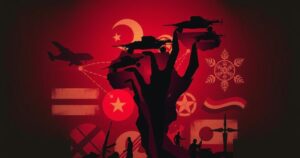Escalation of Conflict: The Assassination of a Hizbollah Leader and its Implications

The assassination of Hizbollah’s leader has intensified the conflict between Israel and militant groups in Lebanon, disrupting local communities and escalating violence. Israel’s strategic military operations, underpinned by advanced intelligence capabilities, underscore its commitment to neutralizing threats from Hizbollah amid broader geopolitical implications involving Iran and the United States. As communities flee their homes and regional tensions mount, the prospects for peace remain tenuous, straddling between negotiations and inevitable escalation.
The ongoing conflict in the Middle East, particularly pertaining to Yemen and Lebanon, has escalated following Israel’s recent operation against Hizbollah and the assassination of its leader. This strategic move is part of a broader campaign aimed at undermining the Iranian-backed militant group, which has been intensifying its engagements with Israel. Additionally, infrastructural and intelligence advancements have enabled Prime Minister Netanyahu’s forces to gain a tactical advantage in the ongoing confrontation. The assassination of a significant Lebanese militant figure—a move that has sent shockwaves throughout Lebanon—has stirred a cacophony of emotions among the populace. Many Lebanese families have been compelled to flee their residences amidst the rising violence and bombardment from Israeli forces. The timing of these events coincides with the anniversary of Hamas’s October 7 attack, heightening tensions in the region. In light of these developments, Iran’s response to the killing of Hizbollah’s leader has been tepid, reflecting a potential recalibration of its regional strategies. Furthermore, the presence of American forces and their frustrations regarding Israel’s unyielding approach to Hizbollah suggests an intricate web of geopolitical ramifications. Citizens in regions such as Haifa show overwhelming support for offensive strategies against Hizbollah, even as the repercussions of such actions reverberate throughout the local populace. The prospect of a renewed ground invasion looms as potential truces are discussed yet remain tenuous touches amidst a landscape marked by deep-seated sectarian rifts and escalating violence.
The recent military actions in the Middle East, particularly those involving Israel and Hizbollah in Lebanon, are positioned within a broader narrative of regional conflict that has perpetuated cycles of violence and displacement. Hizbollah, a powerful paramilitary group, has notably contributed to the sectarian divisions within Lebanon, exacerbating tensions amidst its ongoing engagements with Israel. The dynamic also draws in complex geopolitical influences from countries like Iran, which backs Hizbollah, further complicating dialogue around ceasefire and peace negotiations. Additionally, the United States plays a crucial role in these negotiations, often viewing its influence as a necessary component in stabilizing this turbulent region. Understanding the historical context of these conflicts is essential to grasping the implications of current events.
In conclusion, the assassination of Hizbollah’s leader signifies a pivotal moment in the ongoing conflict between Israel and its adversaries in the region. It highlights the precarious balance of power in Lebanon and underscores the potential for increased chaos in the Middle East. The resultant repercussions for local populations, along with shifts in international strategic alliances, will require careful consideration as global powers navigate the complex landscape that is continually shaped by these evolving conflicts.
Original Source: www.ft.com





